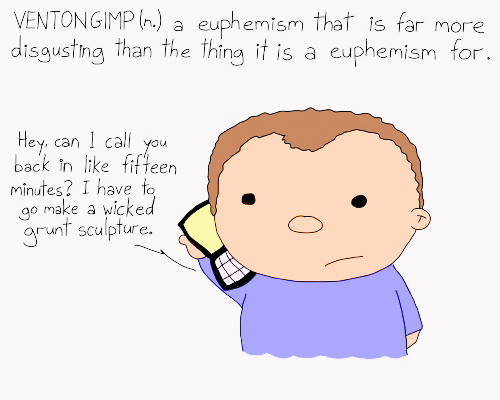 Oliver Pritchard takes on American English – they say tom-ay-to but he clearly says tom-ah-to
Oliver Pritchard takes on American English – they say tom-ay-to but he clearly says tom-ah-to
In the second of a series of articles about the different ‘Englishes’ that are spoken around the world, we take a look at American English. Bizarrely, although American English is by far the most common variant of the language, almost all textbooks use British English, which means a lot of the grammar in them is actually a little bit different from what is most commonly used around the world.
Past simple vs present perfect
A common theme of American English is that (like Spanish) the past simple is used far more than in other varieties of English. For example, “Did you do that already?” in- stead of, “Have you already done that?” It is not clear where this comes from, although it could be because it seems more urgent or more immediate. However, this loses the subtlety that the perfect form allows. Strictly speaking, the present perfect should be used here, but all forms are valid.
Grammatical correctness
More than other speakers of English, Americans often insist on certain grammatical issues, so you find advice such as “never end a sentence with a preposition” or “you cannot evacuate people, only buildings” etc. You might also find rules about which words should be used in which circumstances. While these rules are correct, you should also remember that English is a living language, which changes and grows.
Directness / formality
In America, one will often hear ‘can I get…’ rather than ‘may I have…’ in requests. This is a new development and presumably intended to be more friendly, although the language itself is much more direct. Remember that Americans can be quite direct compared to Colombians, so this might seem quite rude or presumptuous.
However, Americans can also be extremely formal at times, as seen most commonly in the use of ‘sir’ and ‘ma’am’. Both of these forms are rarely used in modern English, although many Americans stick to them. They are usually used when speaking to older listeners, or any person in a position of authority, although some people also use it when addressing strangers. It sounds strange to me to be addressed as sir – in Britain, people are only called sir if they have a knighthood – but this is a common thing to be found among many Americans.

Photo: theoatmeal.com
Spelling
Spelling in American English is usually easier than in British English. This is mostly due to the fact that the Victorian Brits preferred French spellings. Commonly, American speakers tend to use ‘z’ where Brits use ‘s’ in verb conjugations and adjectives. For example capitalize instead of capitalise. Americans use ‘o’ in place of ‘ou’, as in favor, or most famously color, not colour. Also, note that Americans use an ‘-er’ ending rather than ‘-re’ almost exclusively, for example meter or center instead of metre
or centre. In this example, the pronunciation is also different as the final syllable remains strong and is pronounced clearly. Importantly, one must remember that the American spelling form is almost always the international standard, so where minor differences do exist, it’s better to default to the American, for example ‘aluminum’ rather than ‘aluminium.’
As in British English, American English has a standard form, which is known as General American. This is generally what you will hear on TV, in films and the standard accent between states. However, note that this is not clearly defined, unlike British RP – most people never use the term ‘General American’.
Accents
The range of American accents is more limited than in the UK, but there is still significant difference between regions, partly due to the extreme size of the country. Typical features of all American accents are that they tend to pronounce syllables much more clearly than other forms of English, so there are fewer ‘schwa’s. /l/ is often pronounced in a much more relaxed way, across all accents. If you want to practise (or “practice” if you want to spell like an American) this, simply make your mouth wide as you pronounce an /l/, instead of moving your cheeks in, as you would normally do. Although most sounds are pronounced clearly, you might find that /t/ is often lost, as indeed in the word ‘often’ / offen/.
Vocabulary
Standard vocabulary across American speakers includes many Old English words, so you might hear words such as skillet (for frying pan) or fall (autumn). Though some arrogant British people criticise these as incorrect, they are in fact the original terms in the language. There are interesting splits throughout the country with synonyms, most famously soda/pop and sneakers/ tennis shoes.
The usual expression for a group of people is ‘y’all’ in the south or ‘you guys’ in other regions. This changes depending on state and region, although both will be understood throughout the States. Either way, you should remember that both expressions imply a certain unity or friendship between the speaker and the listener(s). ‘ Y’all’ is rather more common further south and east than ‘you guys.’
Many irritating bits of slang have become commonplace, in both British English and American English, ‘like…’ is used in both. Sir Stephen Fry cries every time this is used, but it is a common lexicographical term. It’s often used as a filler, when some- one has nothing to say. It can also take the place of reporting speech “I was, like, OMG because it was, like, so good”. Importantly for Spanish users, it performs the function of ‘como’ in many instances and is a fairly easy translation.
‘Already’ is a very common word in American English, and is often used extraneously. For example “have you done that already” does not really need the marker “already”, yet it is often used to indicate a sense of time or of immediacy. Americans also tend to avoid unnecessary words. For this reason, you find the construction “through Tuesday” rather than “from (day) until Tuesday”. In this case, ‘through’ indicates the time and limit that is important.

Photo: theoatmeal.com
Regional thangs Deep South
Some of the most recognisable accents in America are found in the South. This is a typically relaxed, slow and drawling accent. Drawl is a verb that means to make longer, and you will hear Southern speakers of English using looong voooweeel sounds. For example, Texas is often pronounced as Tay-ex-us. Texans also use what is sometimes called the triphthong, where a double vowel sound is made into a triple sound. You will also hear that many southern speakers move the stress forward in some words, for example you will hear ‘police’ rather than ‘police.’
Grammatically, the main Southern difference is found in the use of auxiliaries. First, they often drop the verb ‘to be’ when not using the first person. This leads to “you (are) in my house, boy” or “that (is) a nice dress, girl”. In past tenses, you can use ‘done’ in place of ‘did’ and use it more regularly than is usual. “I done wrote this article already!” Normally, we wouldn’t bother using the auxiliary, and if we did, we wouldn’t conjugate the verb. Also, you might find simplistic forms for past tenses: ‘to be’ always as ‘was’ and conjugations such as sleeped, knowed etc. When using the perfect forms, the ‘have’ is often dropped “I been livin’ in South Carolina my whole life”. When using the ‘be going to’ future form, as in basic sentences, the ‘be’ part is also often dropped. You might also find that Southern users use ‘a’ in front of verbs, for example “I’m a-going out”. Finally, Southern users often use ‘it’ in place of ‘there’ for descriptions of basic truths. For example “it is nice weather tonight, Mary Anne.”
West Coast
Moving further over to the West Coast, the Californian accent is similarly laid back, even to the point of sounding lazy. Californians also use an enormous amount of slang. Worryingly, many of these slang terms seem to apply purely to synonyms of cool. While one doesn’t generally approve of such terms, they are provided for reference: gnarly; awesome; harsh etc. Also, ‘like’ as a general utterance is more common in California than elsewhere. More irritatingly, they often use ‘hella’ in place of ‘very’ to modify adjectives. Finally, remember that Californians often use Spanish words, or corruptions thereof.
East Coast (Noo Yawk)
On the East Coast, the language was more formally descended from Old English and received less foreign influence than other parts of the country. /r/ is more commonly dropped on the East Coast, and the deep /a/ in words such as bath is still used. A notable difference in the region is found in New York, where social mixing and waves of immigration have led to the development of a rich regionalism. New York is a famously busy and fast city, and this is reflected in the accent, which is often delivered very quickly and directly.
In terms of pronunciation, both /t/ and /d/ are very hard and often explosive. A good trick to imitate a NY accent is to pretend you have a blocked nose. Try this out! Almost all short vowels are pronounced much deeper and further back in the throat, so for example coffee is pronounced as /kwa-fi/ or Long Island as /lawn guy land/. Finally, /h/ is often dropped at the start of words, just like in Spanish.




